
We visited Machu Picchu after a three day hike through the Andes mountains filled with delicious food, local Quechua people, and a massive altitude headache.
We woke up bright and early in Aguas Calientes in order to catch the earliest busses up to Machu Picchu. Due to a massive landslide that had just taken out part of the road we had to switch busses partway there.
Once we arrived at Machu Picchu our guide began our tour and holy shit Machu Picchu is insane. A quick fact before diving in to the rest of this post: apparently the Incans would sacrifice anyone who was “lazy”. This explains a lot.
Our tour lasted about two hours during which we learned about the architecture and agriculture of a city built into the mountains. Interesting facts included: the use of interlocking stones and angled walls to increase stability; tri-layered “steps” for growing crops without need for irrigation; well systems being used to store water throughout the city; and conch shell-like rooms that may have been used to make announcements across the city.
After the tour our guide brought us to the entrance of Huayna Picchu, also known as “what, you didn’t climb enough mountains in the last 48 hours?” It was an intense non-stop uphill climb for an hour to the peak, but it was hella worth it.
The climb back down was significantly easier and once we returned to Machu Picchu we had about an hour to continue exploring the city just the two of us. This was a blast - running around an abandoned centuries-old city and finding all sorts of hidden places is definitely near the top of our travel experiences so far.
After about six hours we headed back to Aguas Calientes to catch our train back to Ollantaytambo and subsequently our cab back to Cusco. We said goodbye to our guide and our Lares Trek + Machu Picchu expedition came to an end.
Weather (Celcius)
Elevation (m)
Machu Picchu, Peru
http://www.quora.com/South-America/What-are-some-cool-places-to-go-in-South-America
The most important attraction in all of South America. Can’t be missed!
Machu Picchu is an Inca site that is home to one of the most amazing architectural creations that dates back to the 13th century. It is located above a Sacred Valley 2,430 meters above sea level deep in the Amazonian jungle.
On booking last minute from nomadicmatt:
If you are looking to do the Inca Trail and have a bit of extra time to wait for a deal, showing up in Cusco or booking a last minute tour can save you lots of money. Booking months in advance gets you the premium price but wait and you’ll find your patience rewarded. This normally works for Inca Trail tours on the Salktantay, Inca Jungle or Lares tours, the classic Inca Trail is normally fully-booked months in advance. I wouldn’t recommend trying to get on that one last-minute if you have your heart set on doing it.
Travelers have three options for getting to Machu Picchu when the Trail is closed (or booked up when they want to visit): simple, adventure and luxury. The simple way is to take PeruRail’s daily train (www.perurail.com) between the town of Cuzco and the Andean site. The one-way price is $46 for the “backpacker” train or $66 for a Vistadome train with panoramic windows, snacks and refreshments.
Whether hiking or riding the rails, most travelers stop for at least a couple of nights in Cuzco, home to the nearest airport (with daily flights from Lima) and a historic city in which to get acclimated to the altitude.
If you take the roughly four-hour train to the site, here is a tip. Spend the night in the otherwise forgettable Aguas Calientes, adjacent to the ruins. Then get up early and explore the site before the next influx of train-riding tourists shows up at about 11 a.m.
Trek Companies
SAS Travel
Rates:
- 4Day/3Night Inca Trail- Adult: US$ 620.00 / US$ 580.00 with valid ISIC student card.
- 4Day/4Night SPECIAL- Adult:US$ 650.00 / US$ 610.00 Student rate.
- 5Day/4Night Inca Trail plus Huaynapicchu- Adult:US$ 750.00 /US$710.00 Student rate.
- 5Day/4Night Inca Trail with Inkaterra Hotel-Adult:US$940.00 /US$900.00 Student rate.
- 5Day/4Night Inca Trail-Sacred Valley- Adult: US$ 730.00 /US$ 690.00 Student rate.
Links:
Tierras Vivas
Links:
Cusi Travel
Links:
Alternative Trails
Salkantay Trek
- $545 starting price
- $30 sleeping bag
- $12 walking poles
- $25 inflatable mattress
- Doing the trail for free
Bussing from Aguas Calientes to Machu Picchu
We had breakfast at our hotel and then walked to the bus terminal to wait in line for one of the earlier busses. We lucked out and were able to board the second or third bus up! It took about half an hour to get to the top after a quick transfer past a land slide that took out part of the path.
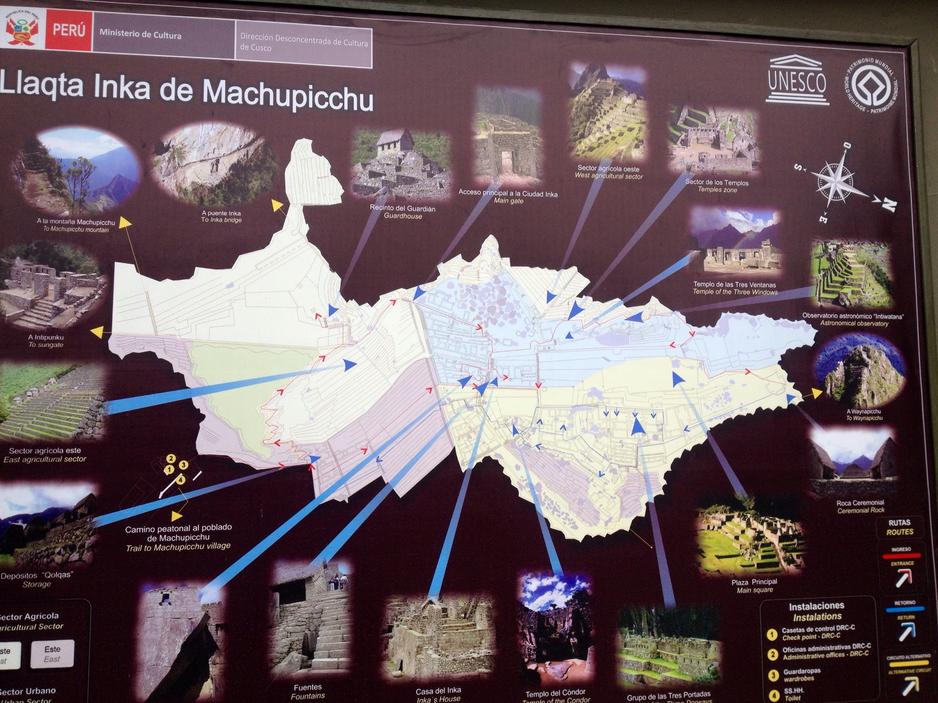
Map of the Ruins
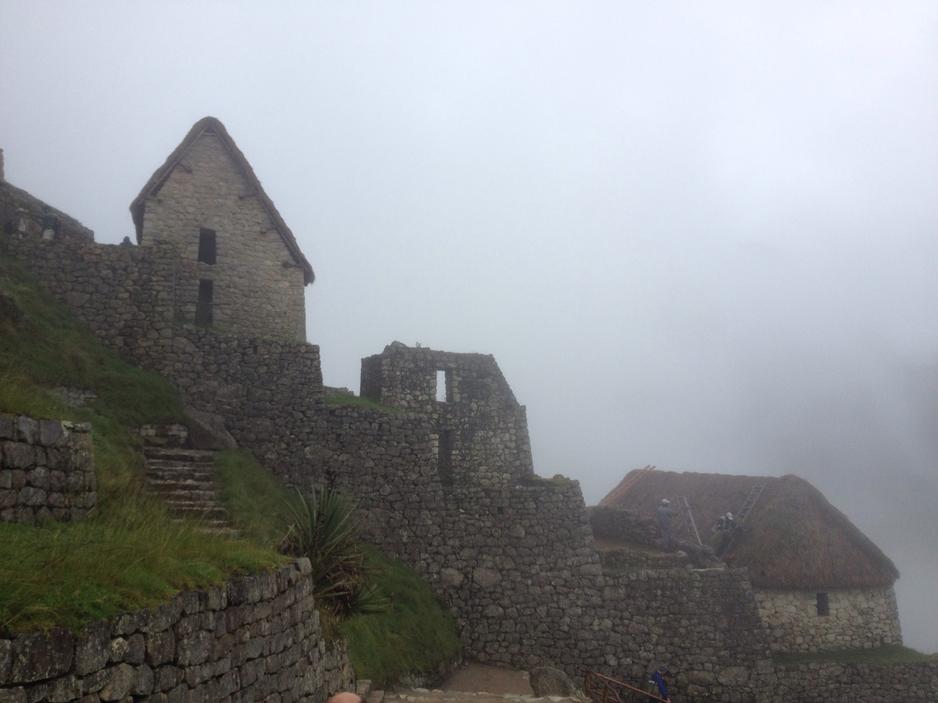
Side View
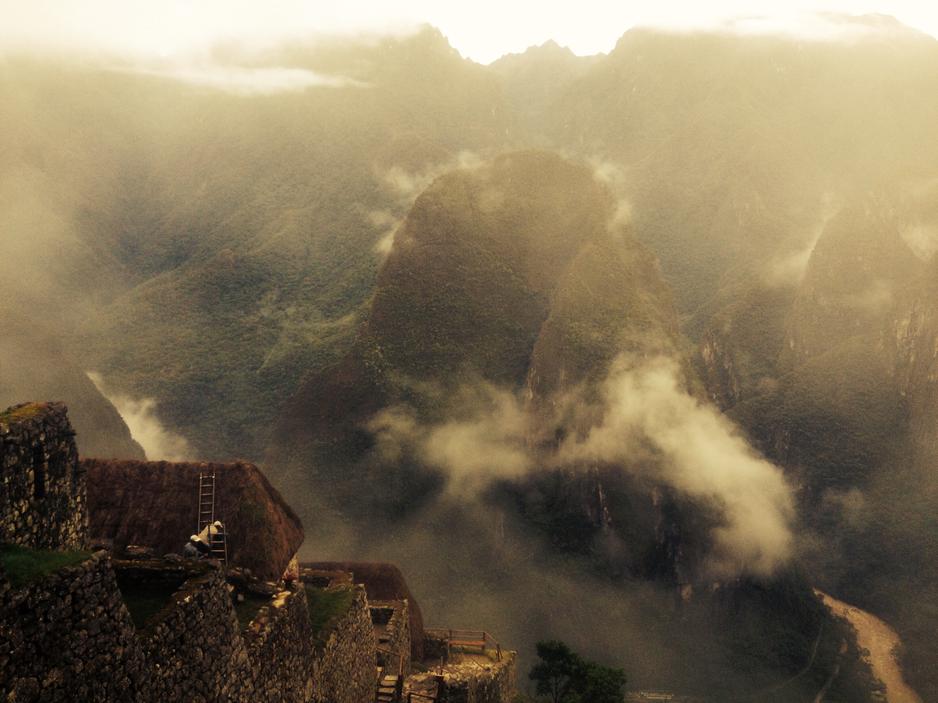
The Mountain Range
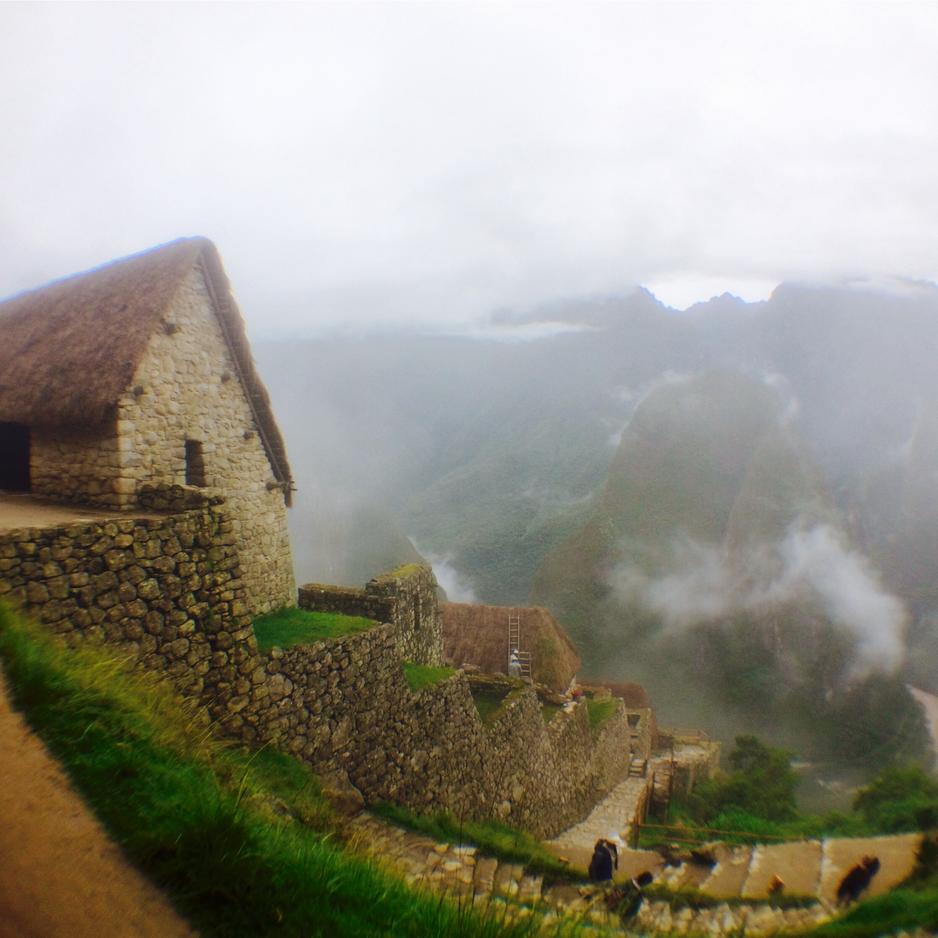
Restored Buildings
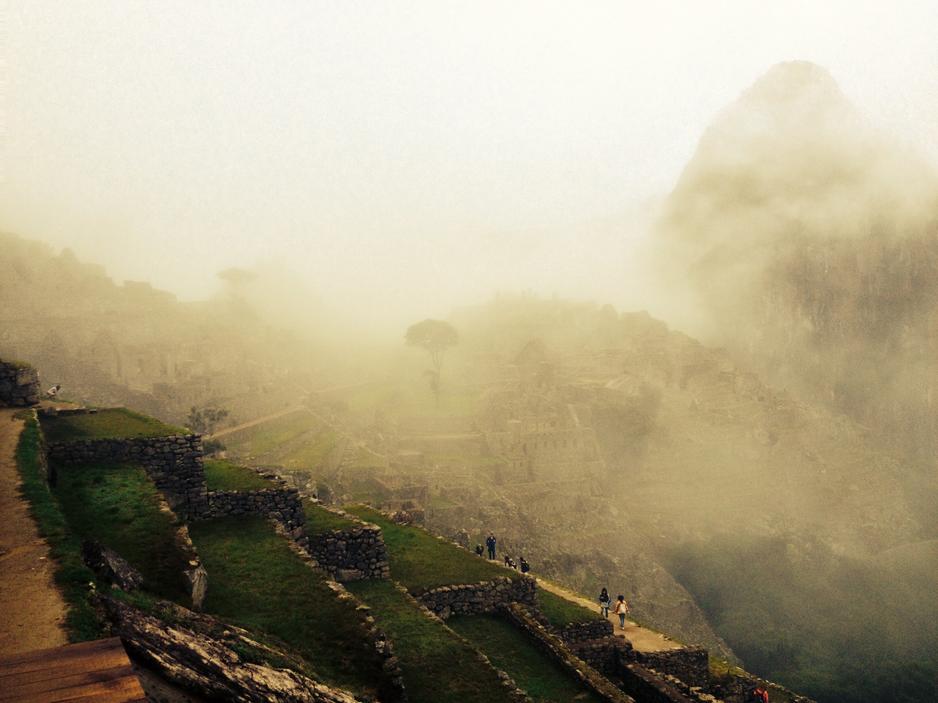
The Fog
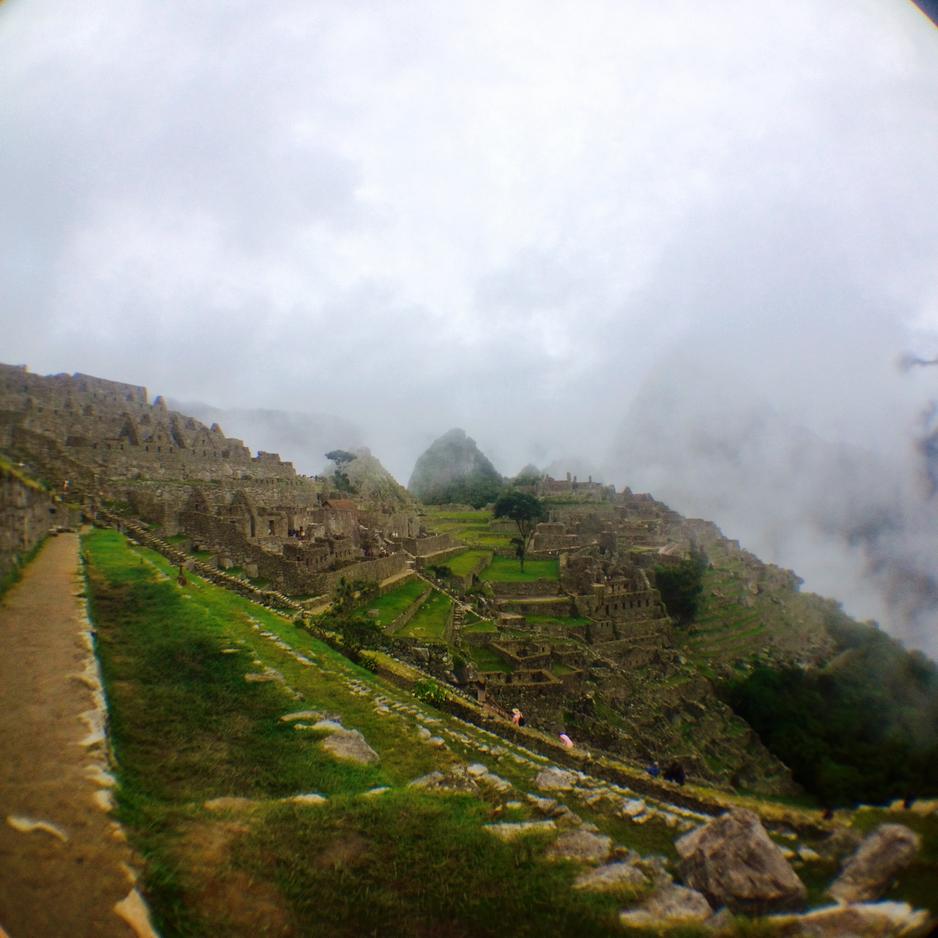
The Ancient City

Stepped Farmlands
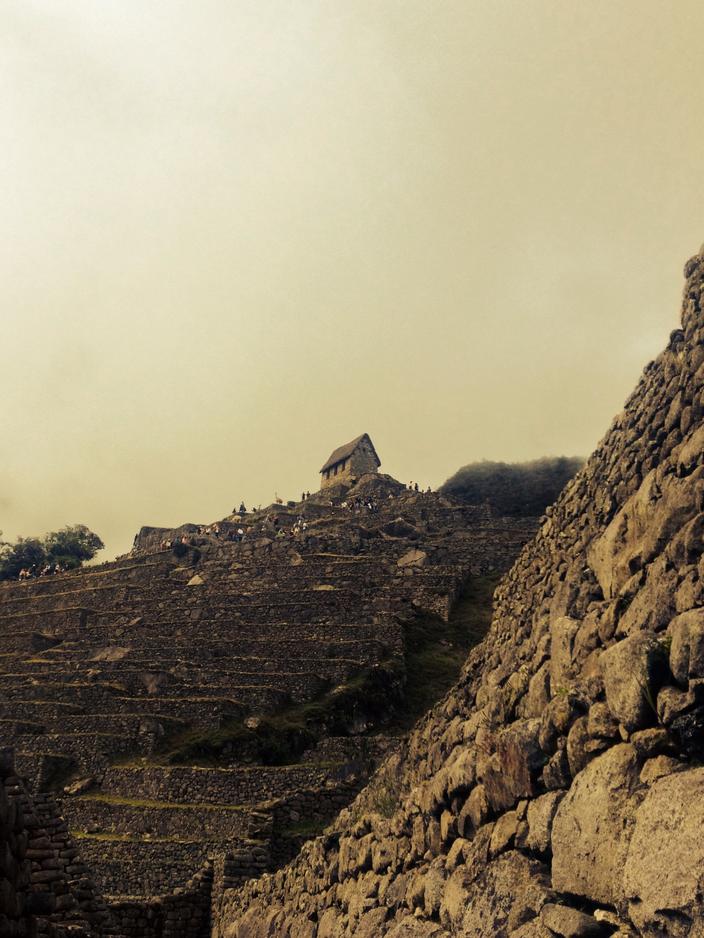
Alone Atop the Hill
The Sun Calendar
Each of the windows in the structure on the left face one of the two sun gates.

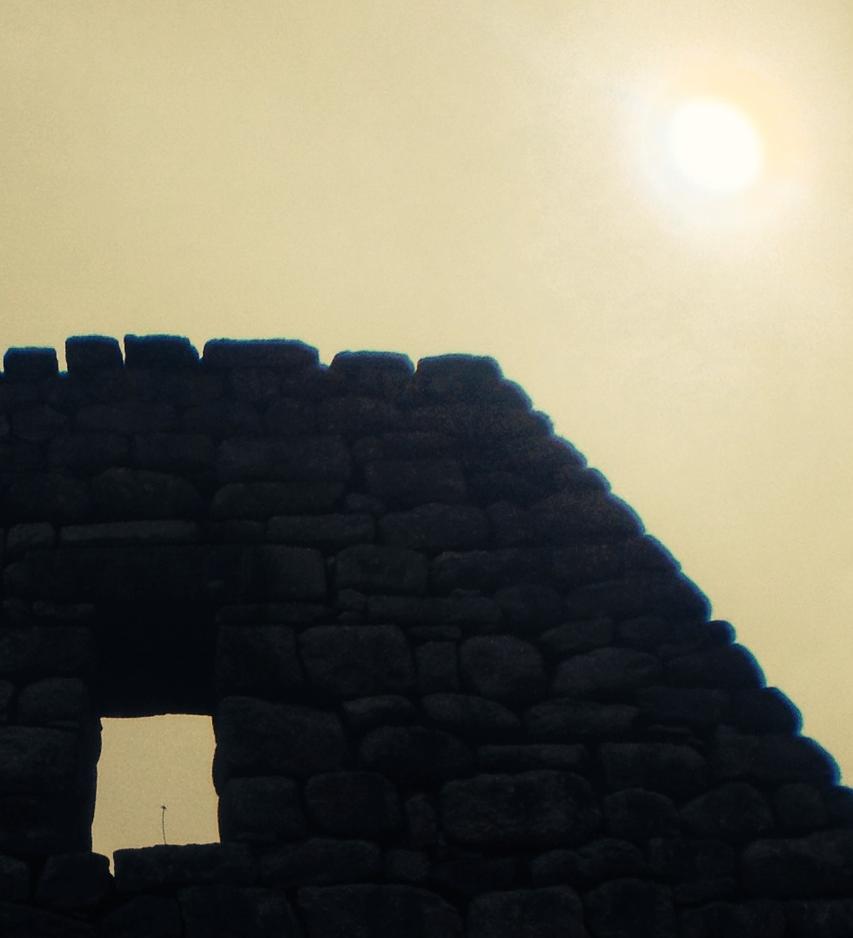
A Single Flower

Quarry
The Incans apparently dragged these stones all the way from over the sun gate to Machu Picchu to create this quarry. They did not fuck around.

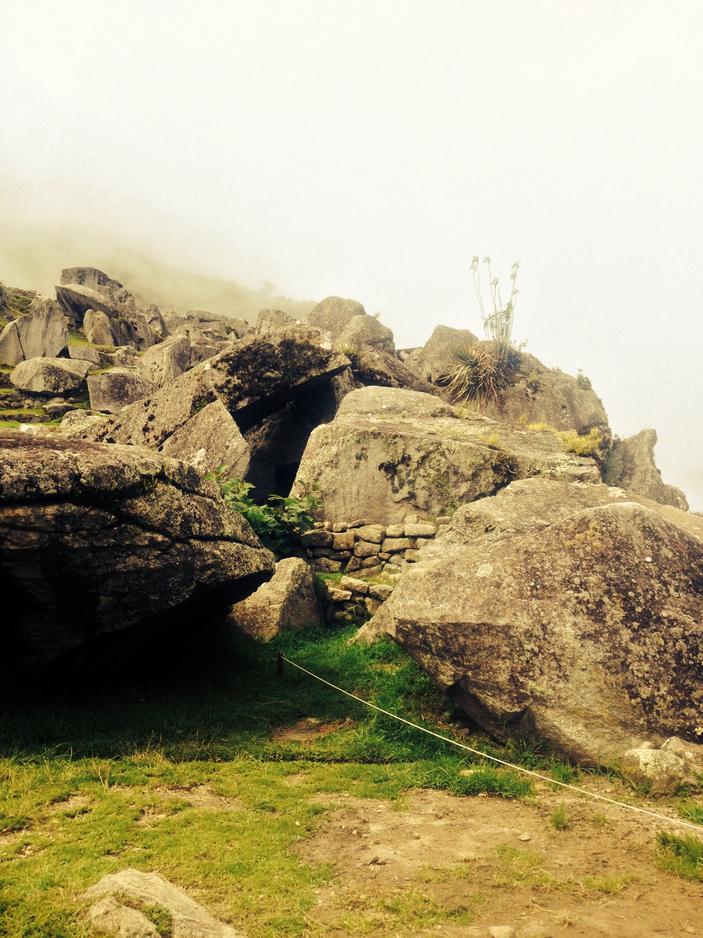
Massive Quarry Stones

The Quarry
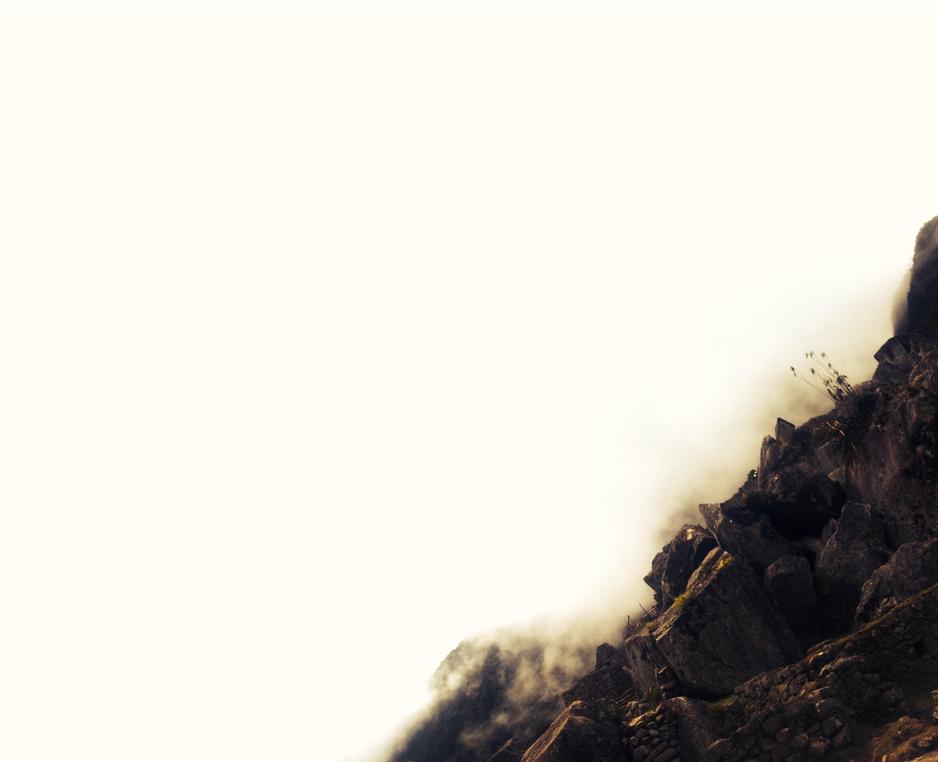
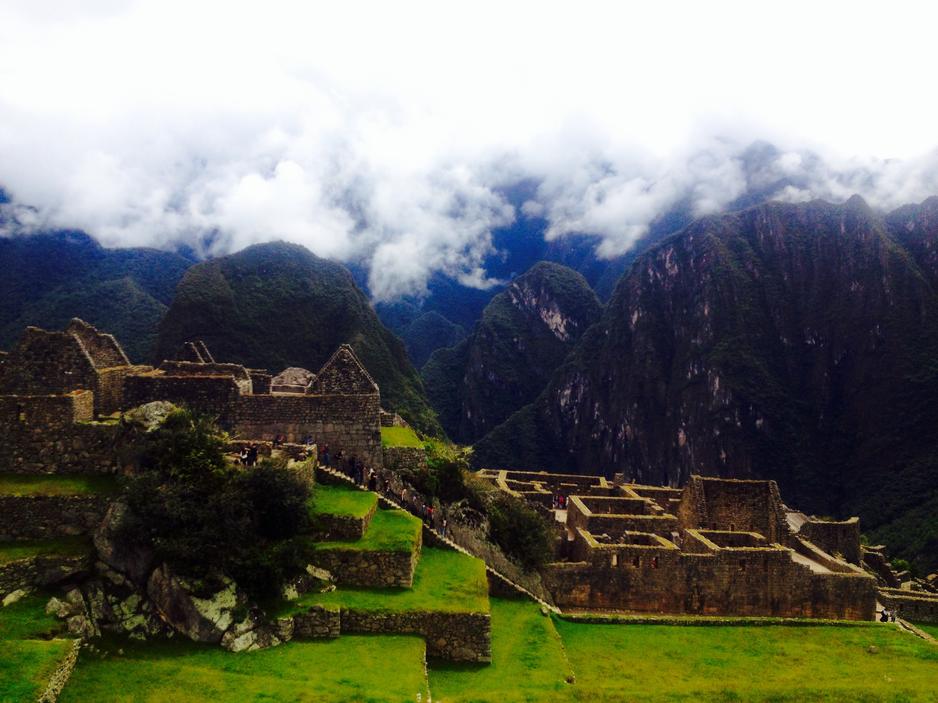

San Francisco Fog
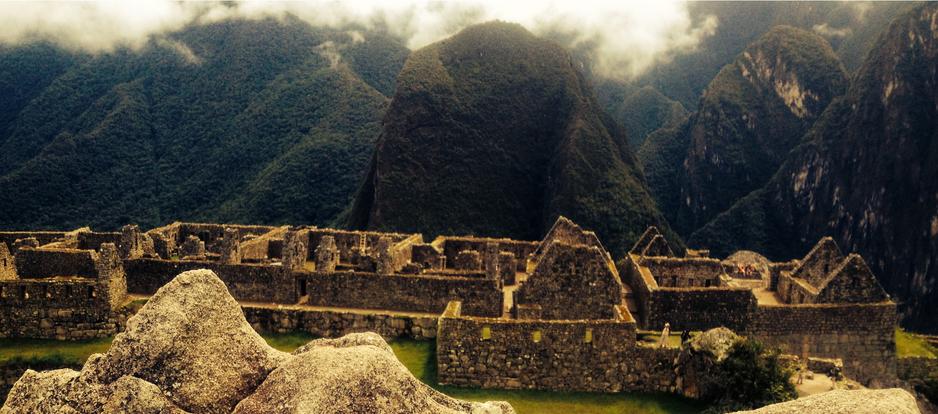

Farmland and Homes
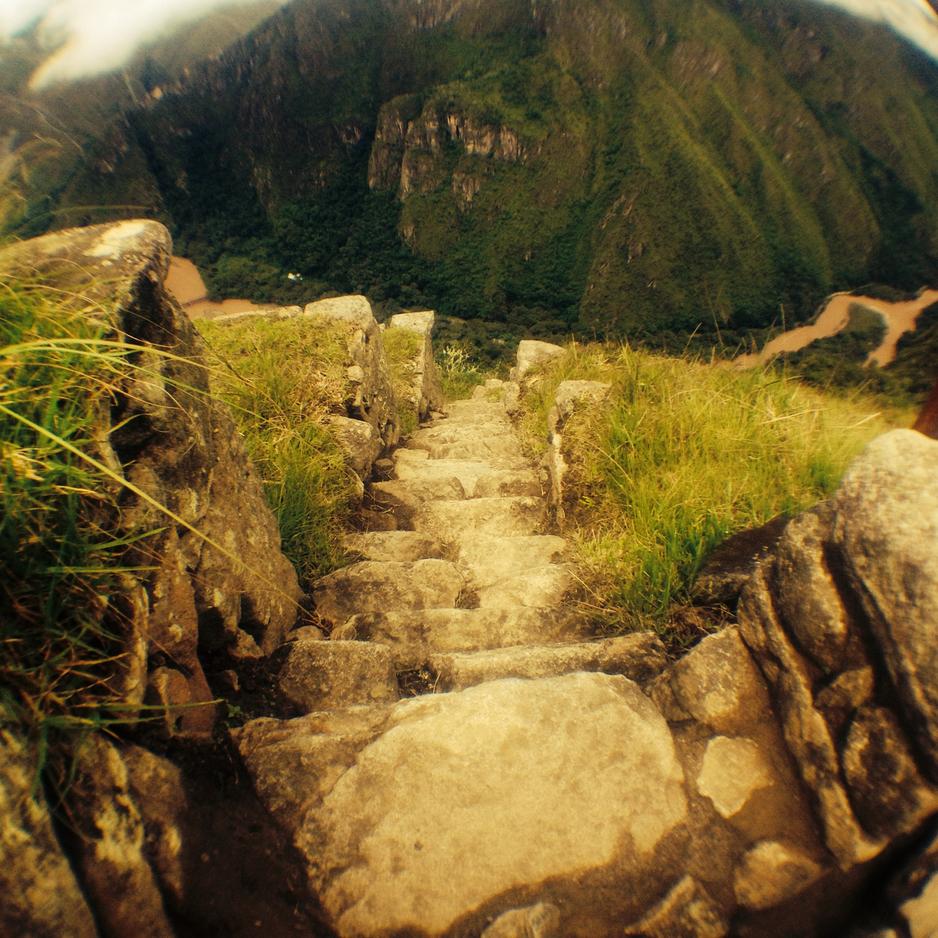

Climbing Huayna Picchu
We bought tickets ($25 USD) to climb Huayna Picchu and it was the best decision. It was an incredible challenge, but once we reached the top it was amazing getting to see Machu Picchu from so far above.
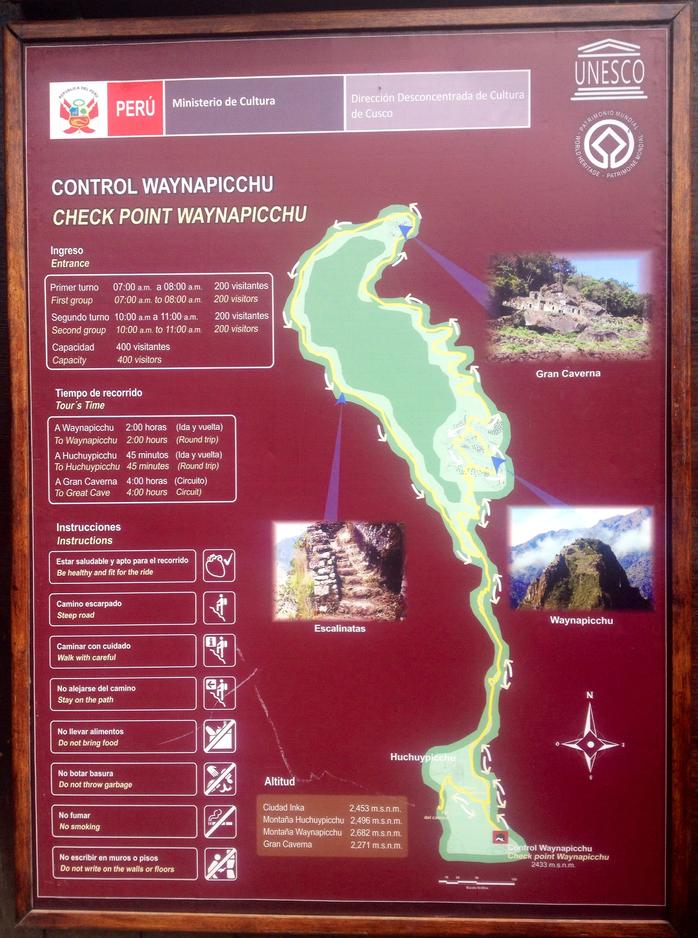
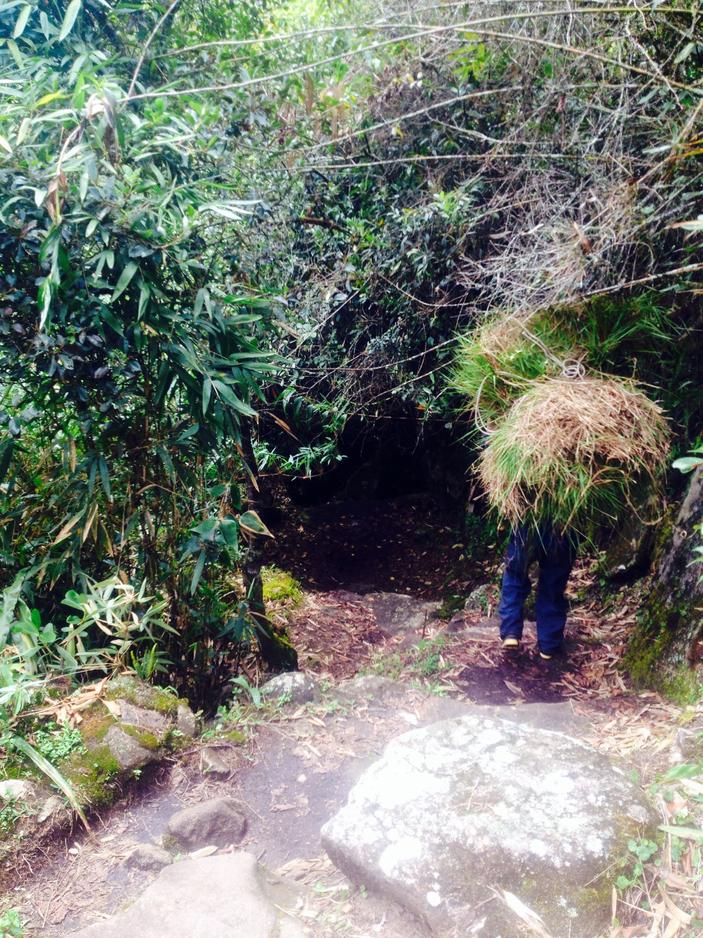

Huayna Picchu
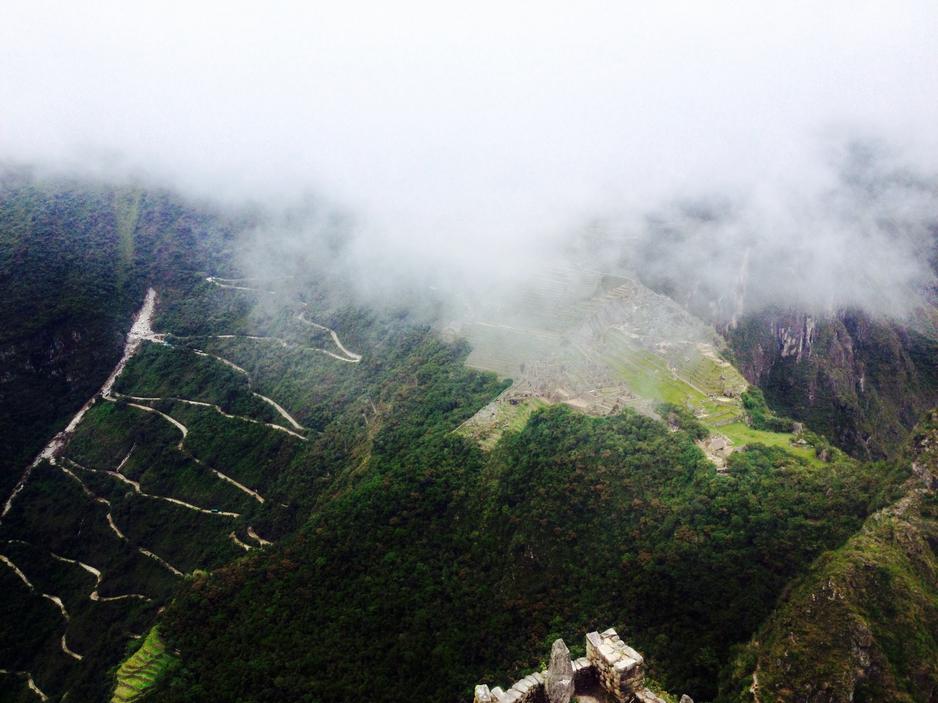
Machu Picchu from Above
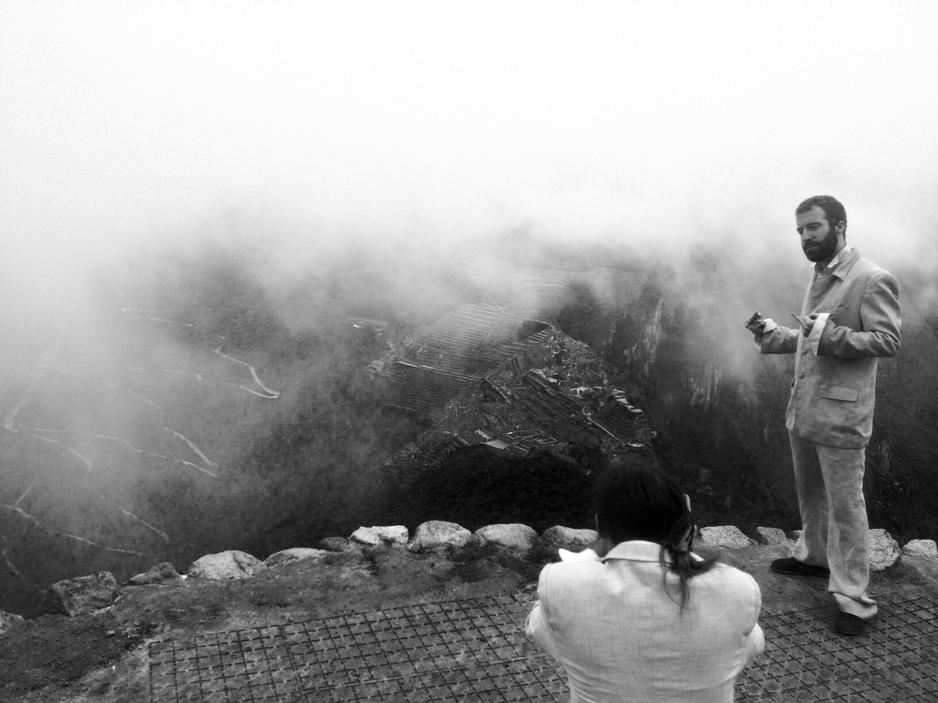
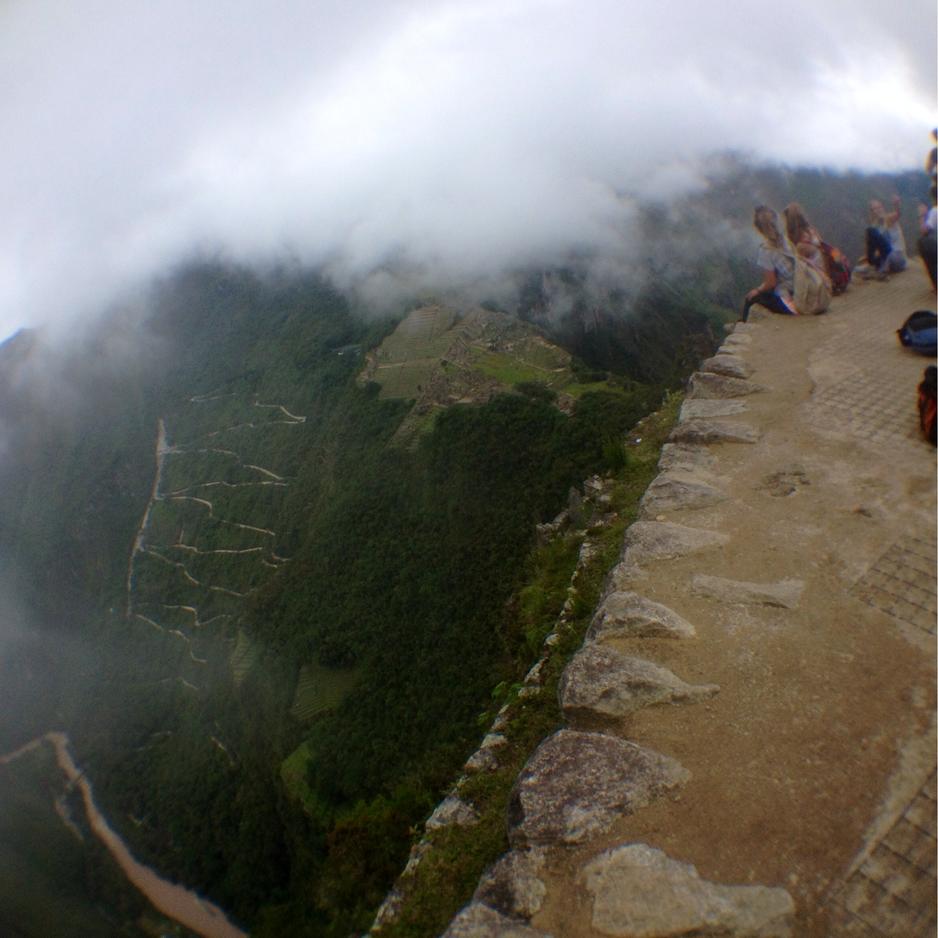

The Top of Huayna Picchu
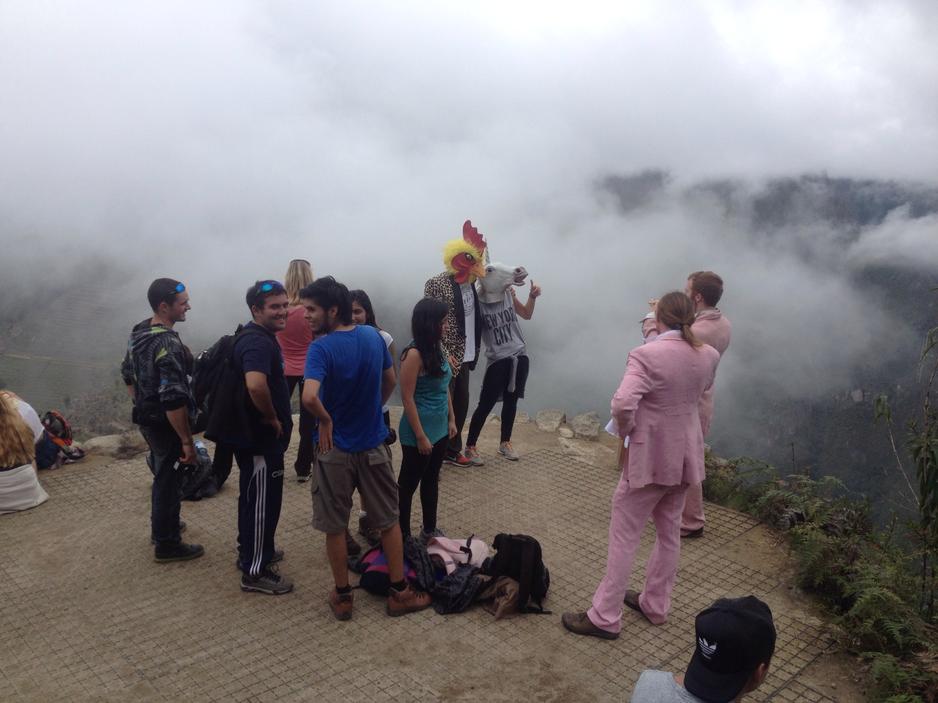
Back from Huayna Picchu
That was an epic climb. So many slippery steps climbed and leering cliffs avoided. All in all it took us a little over two hours to climb up and back down and it was absolutely worth it!
We still had a few hours left to explore Machu Picchu after we descended so we proceeded to getting lost in the ancient city.
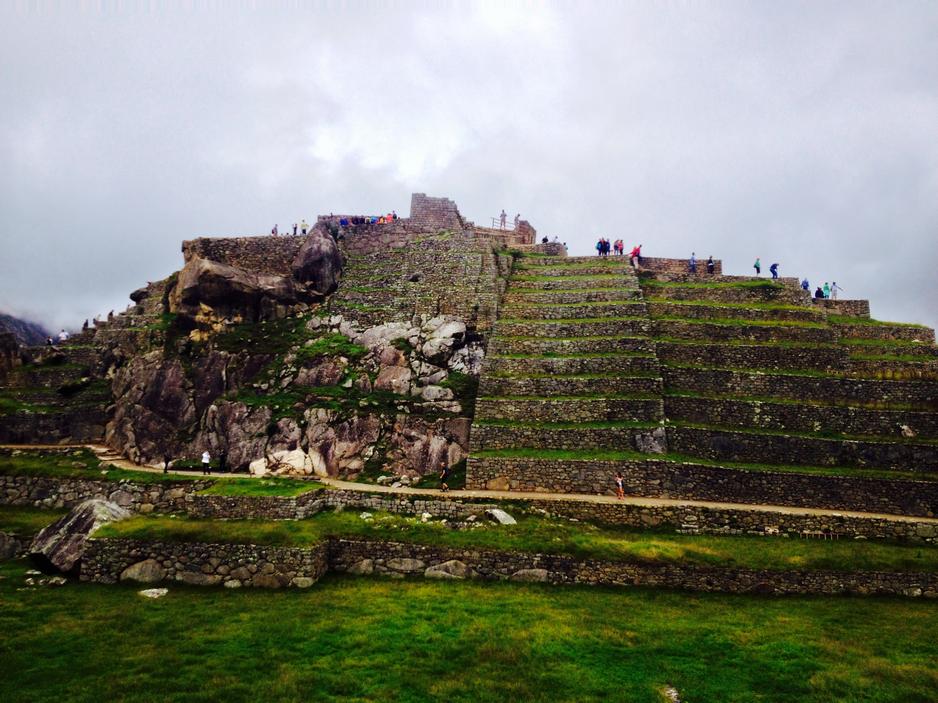
Farmland
The Incans used these stepped areas to grow crops. Each was, and many still are, composed of three layers starting with gravel at the bottom to let water drain, then a layer of fine sand, all topped with fertile soil.
Choir Rooms
These rooms scattered throughout Machu Picchu have many resonating windows. The Incan choirs may have used these to project important annpuncements across the city.
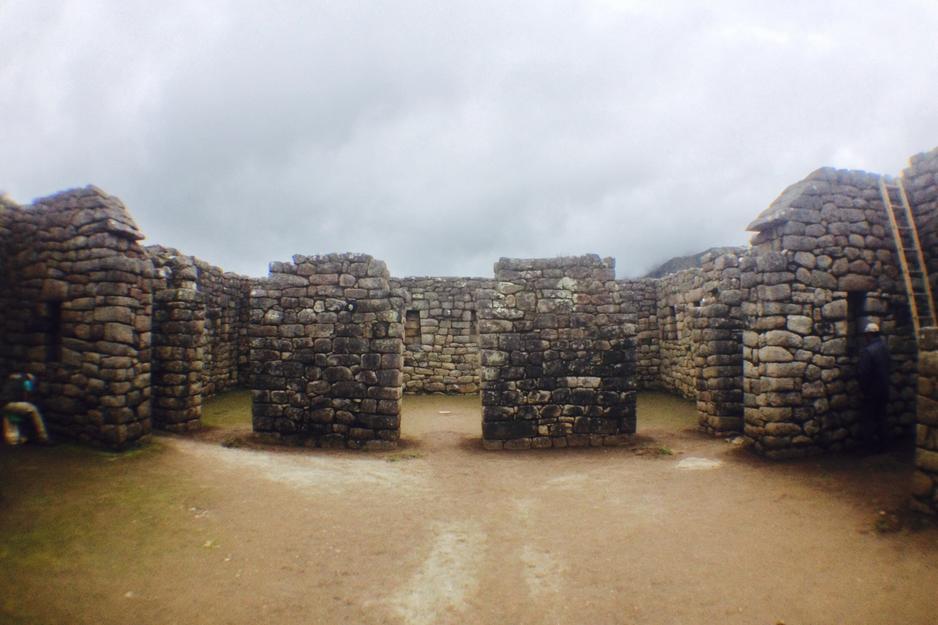
Rooftops
These are the skeletons of ancient Incan buildings. On the sides of each triangular extension are cylindrical stones for attaching the woven roof.

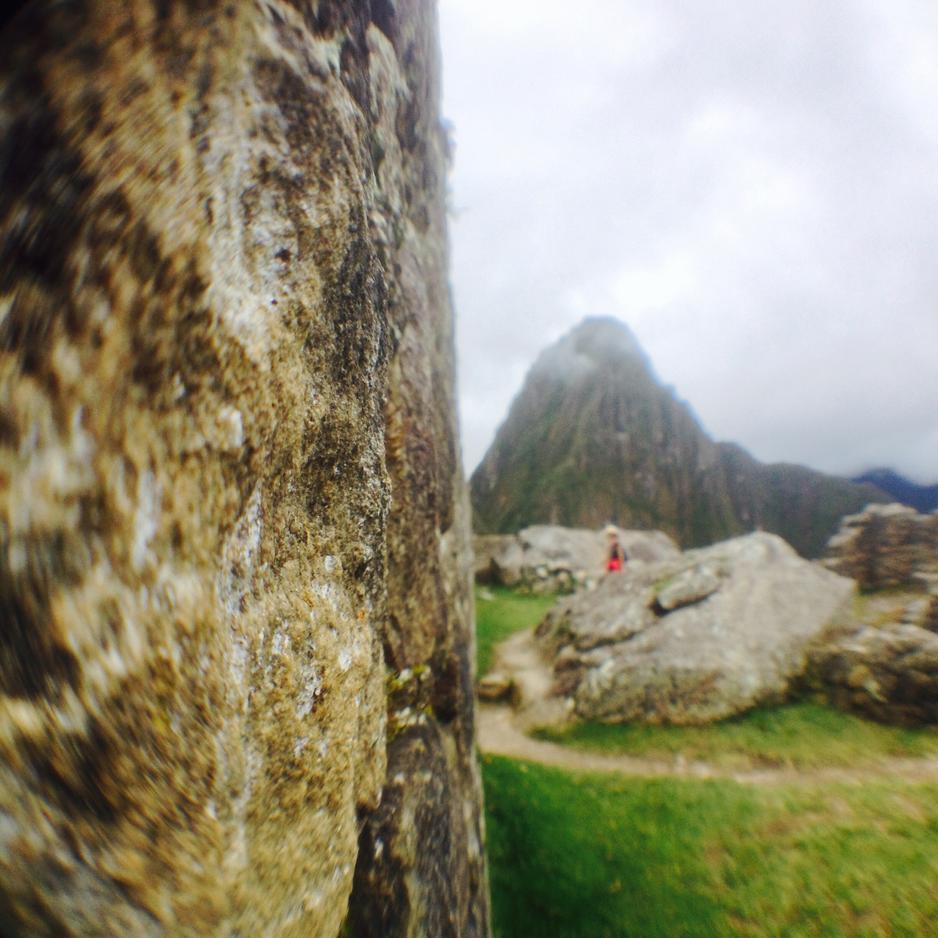
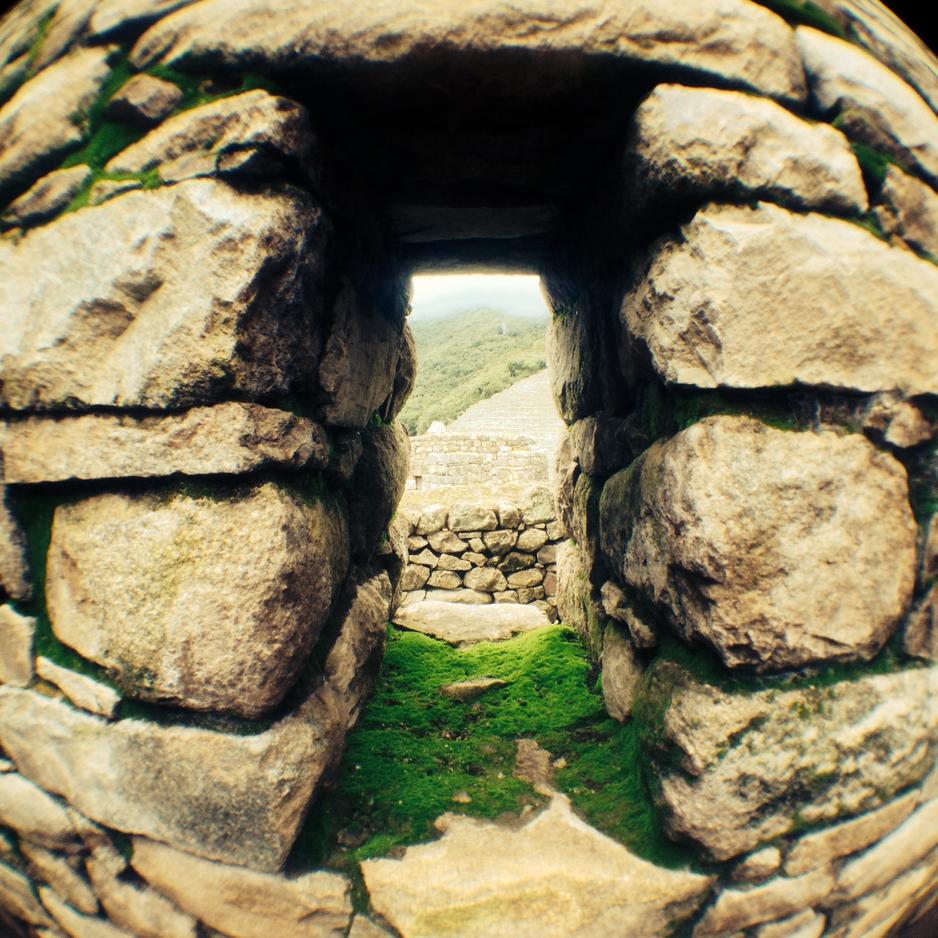
Staircases Leading Nowhere
Not really nowhere, but steep enough to seem it!
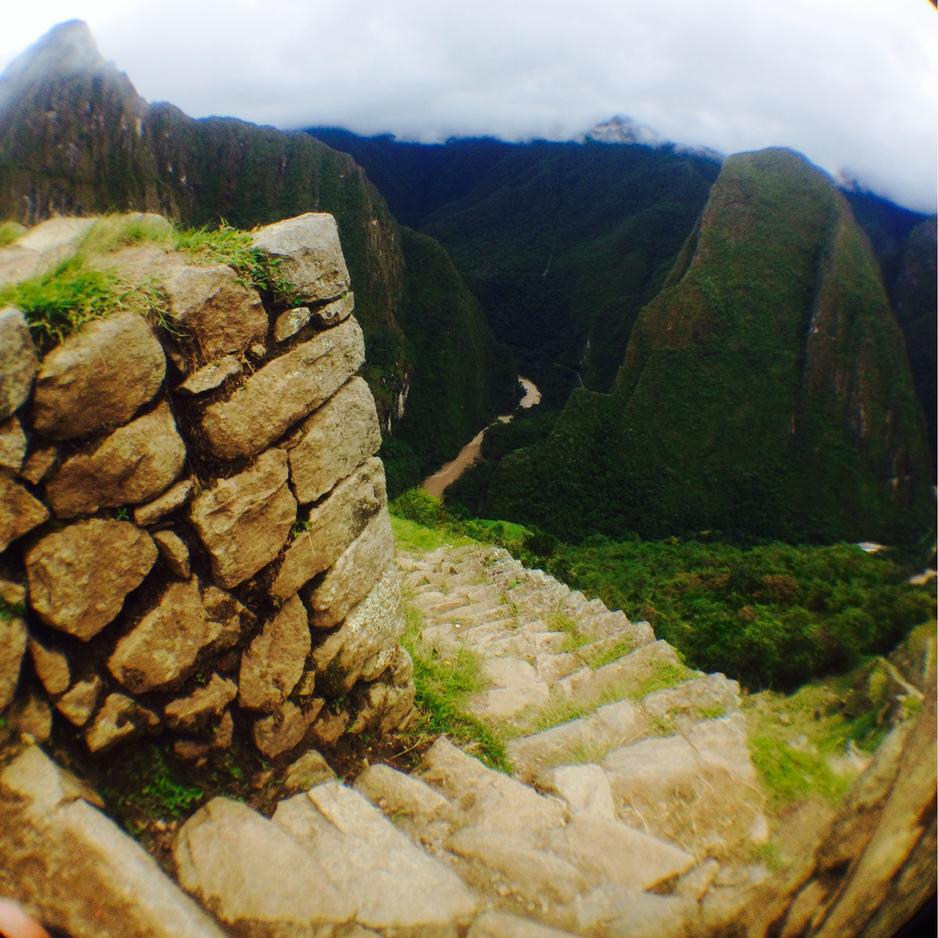

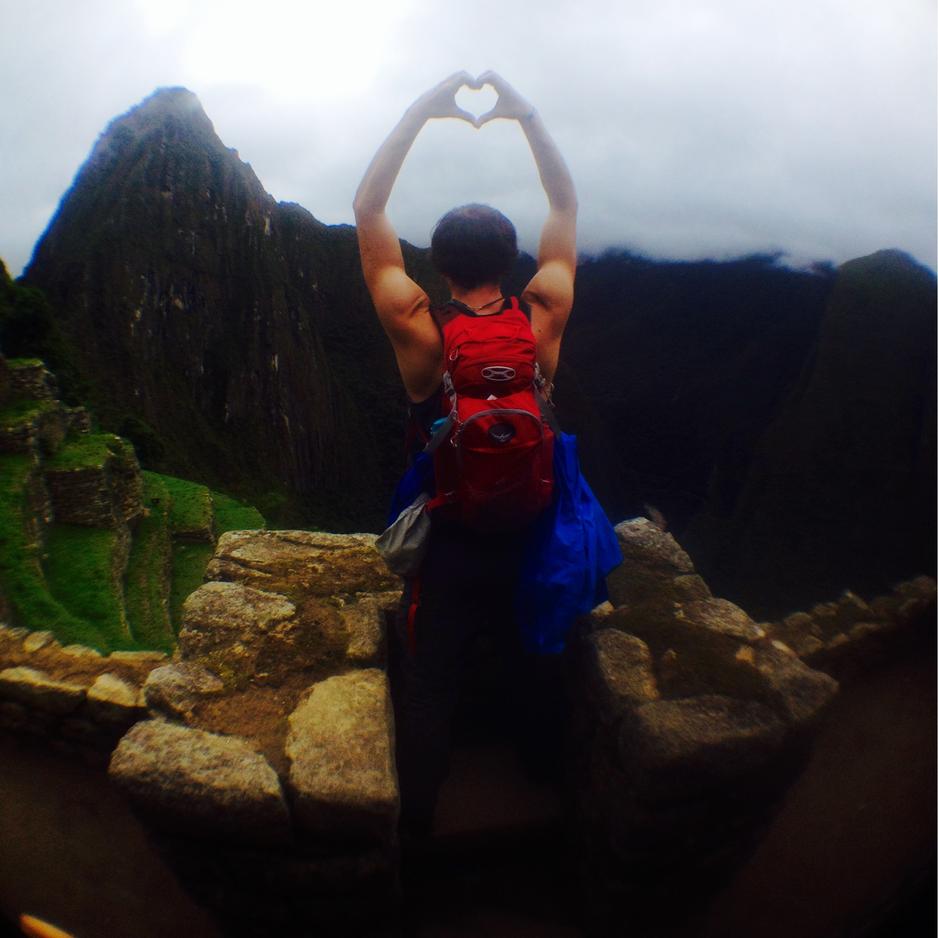
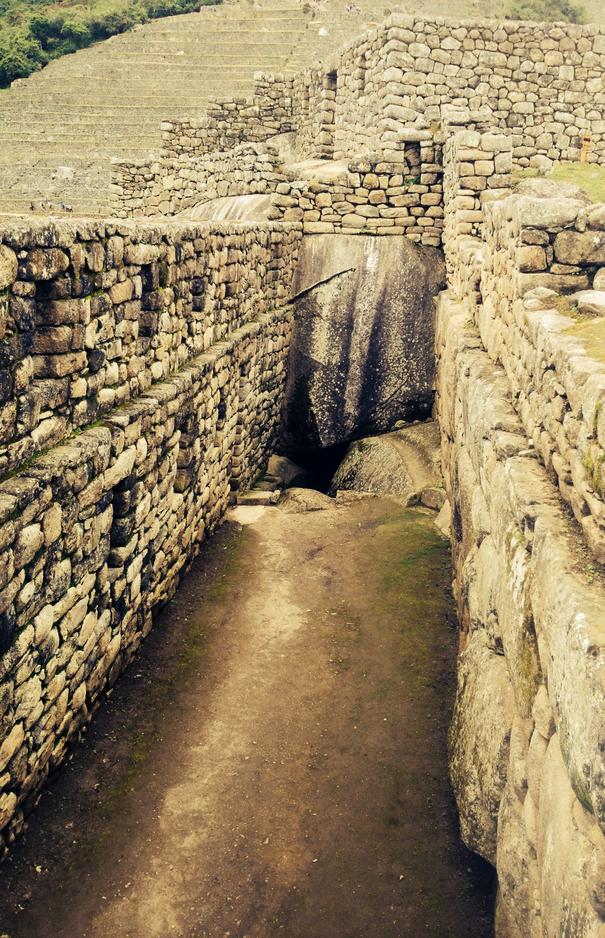
A Two-Story Incan Home
The Incans built many of their homes to have two stories, though because the ceilings were made with wood (and subsequently burned down by the clearing fires) they mostly just look like large warehouses, sometimes complete with stairs leading to nowhere.

Temple Of The Condor
From peru-machu-picchu.com:
The Temple of the Condor in Machu Picchu is a breathtaking example of Inca stonemasonry. A natural rock formation began to take shape millions of years ago and the Inca skillfully shaped the rock into the outspread wings of a condor in flight.
On the floor of the temple is a rock carved in the shape of the condor’s head and neck feathers, completing the figure of a three-dimensional bird. Historians speculate that the head of the condor was used as a sacrificial altar. Under the temple is a small cave that contained a mummy. A prison complex stands directly behind the temple, and is comprised of human-sized niches and an underground maze of dungeons. According to historical chronicles that documented similar Inca prison sites, an accused citizen would be shackled into the niches for up to 3 days to await the deliberation of his fate. He could be put to death for such sins as laziness, lust, or theft.
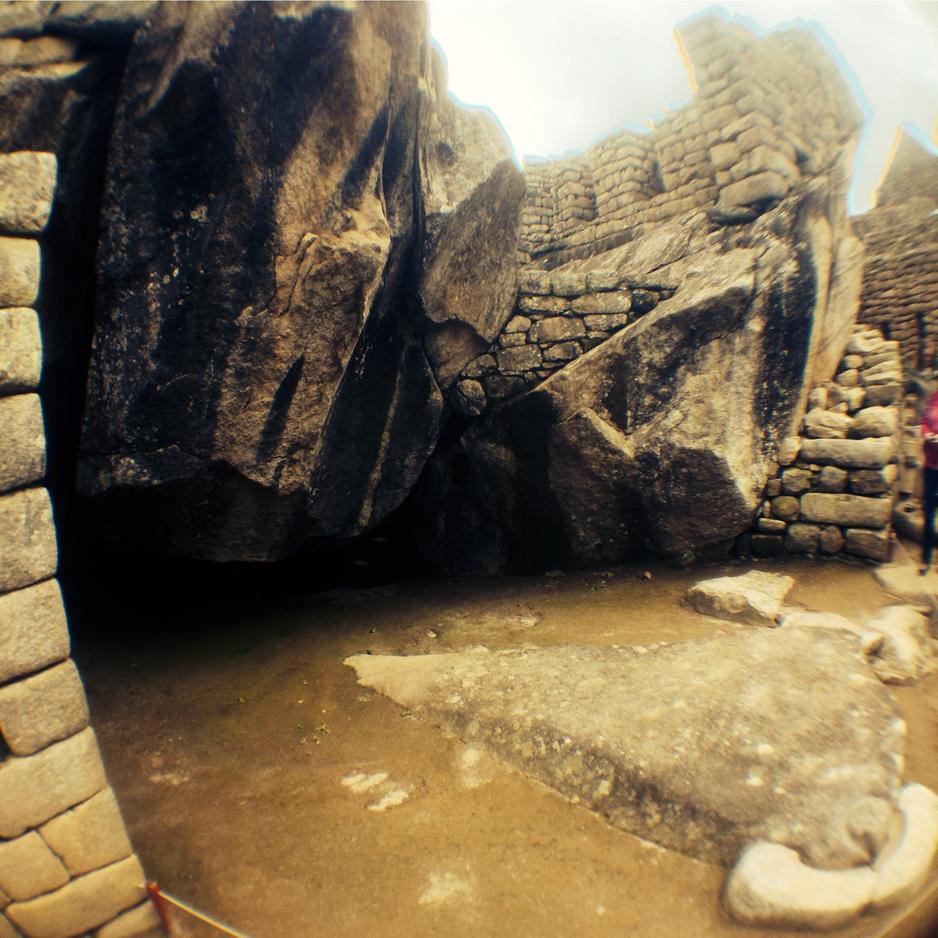
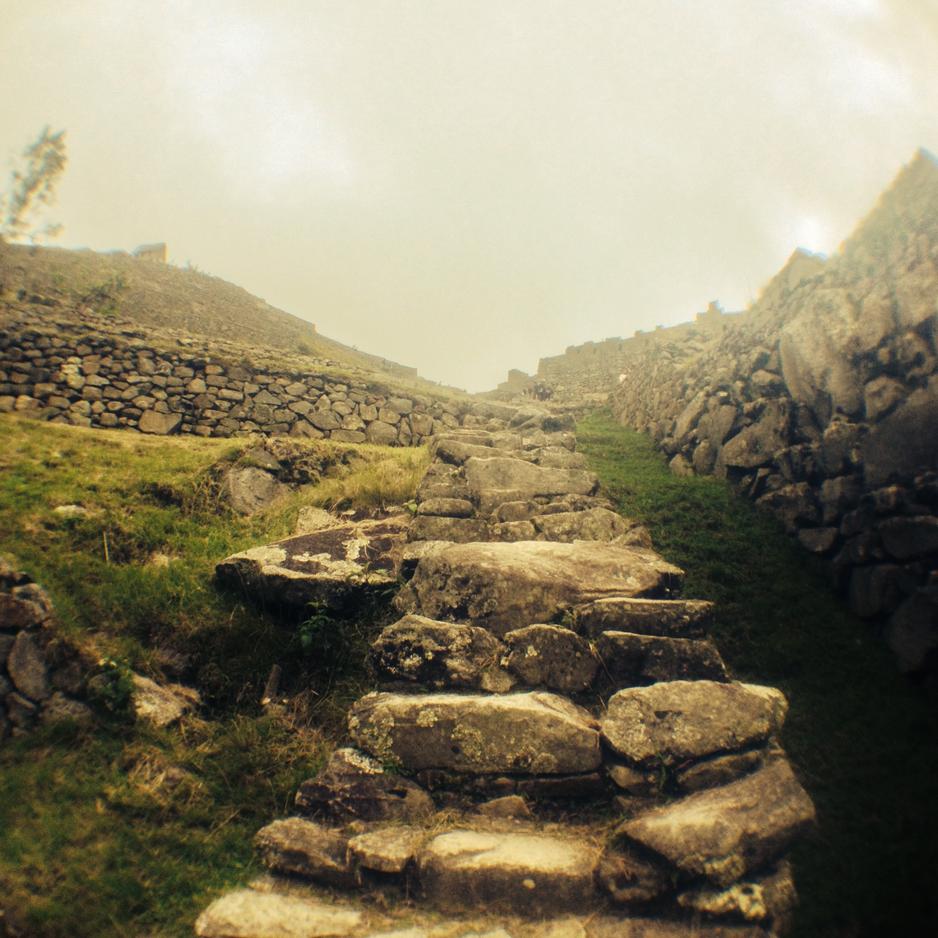
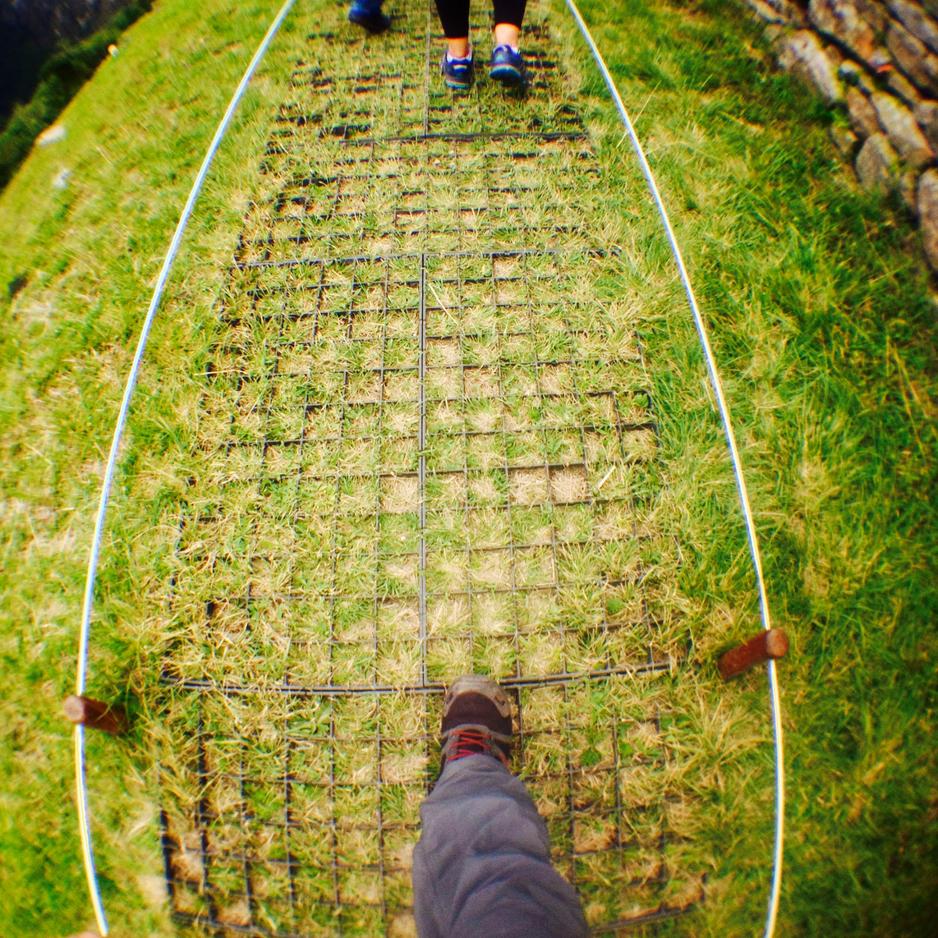
Grates To Protect The Grass
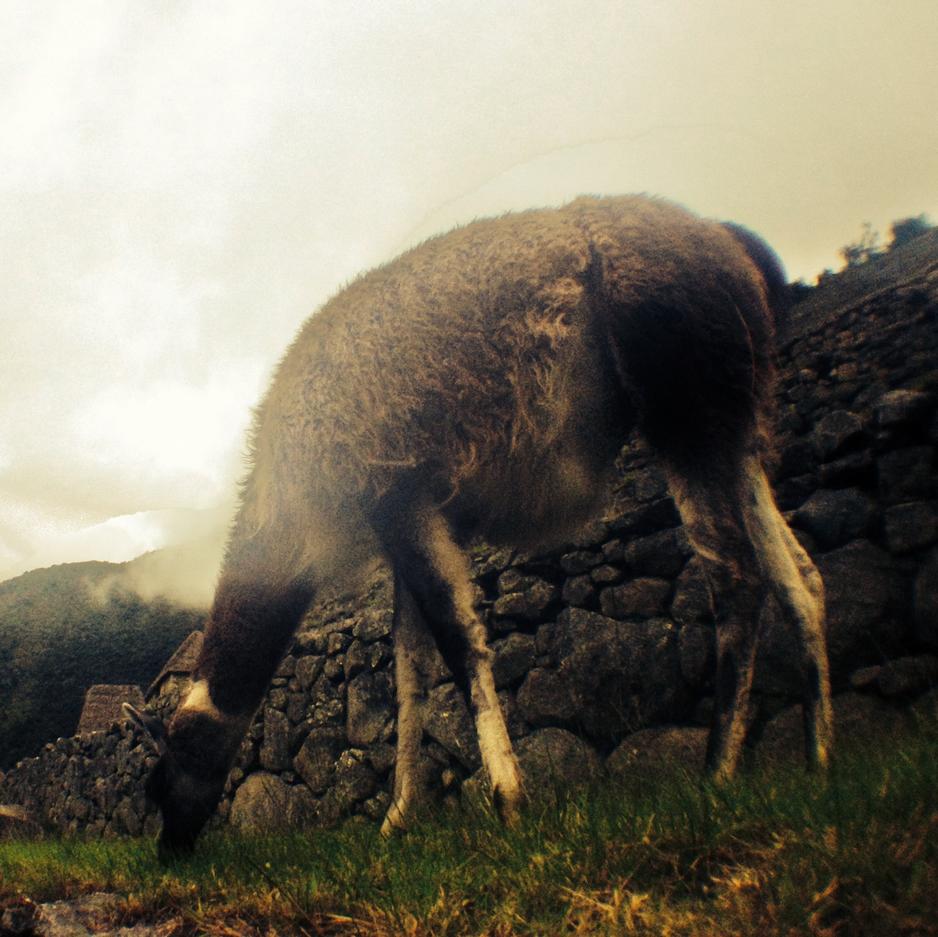
Llama
Bussing from Machu Picchu to Aguas Calientes
We were in Machu Picchu for about six and a half hours; not nearly enough time to fully explore the place sadly.
We caught the bus from Machu Picchu back to Aguas Calientes and skipped the long hike back down the hill, though if it hadn’t been part of our tour package we might have walked (plenty of people did). The bus took about half an hour with the transfer due to the landslide.
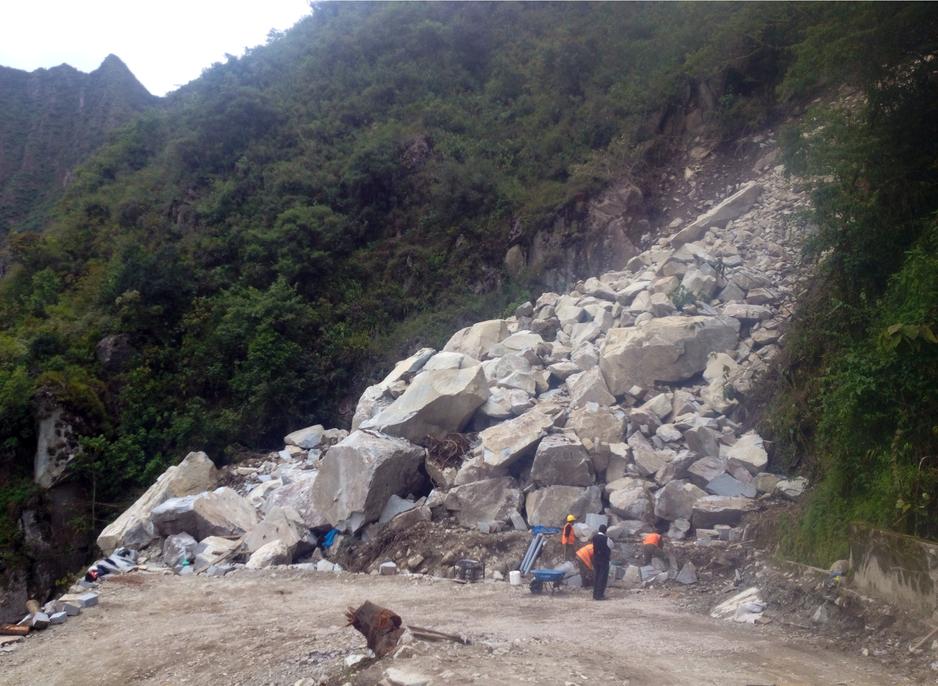
Rock Slide
This rock slide was absolutely massive. Massive boulders were scattered all along one bend of the bus road up to Machu Picchu and you could see the devastation all the way down to the river. We had to get off of our bus along the way and walk to the next bend where we transferred to a new bus.
Lunch at Tupama Wasi
We had an expensive lunch in Aguas Calientes at 20 soles. The pizza was really tasty but we’d have been happy eating at a cheaper place.
The Train from Aguas Calientes to Ollantaytambo
After our lunch in Aguas Calientes we had to run to catch our train because our bags were still at the hotel. Once boarded we were excited to realize that we’d be able to see out the ceiling windows at the beautiful Peruvian landscapes flying by.
The train ride lasted about an hour and a half.
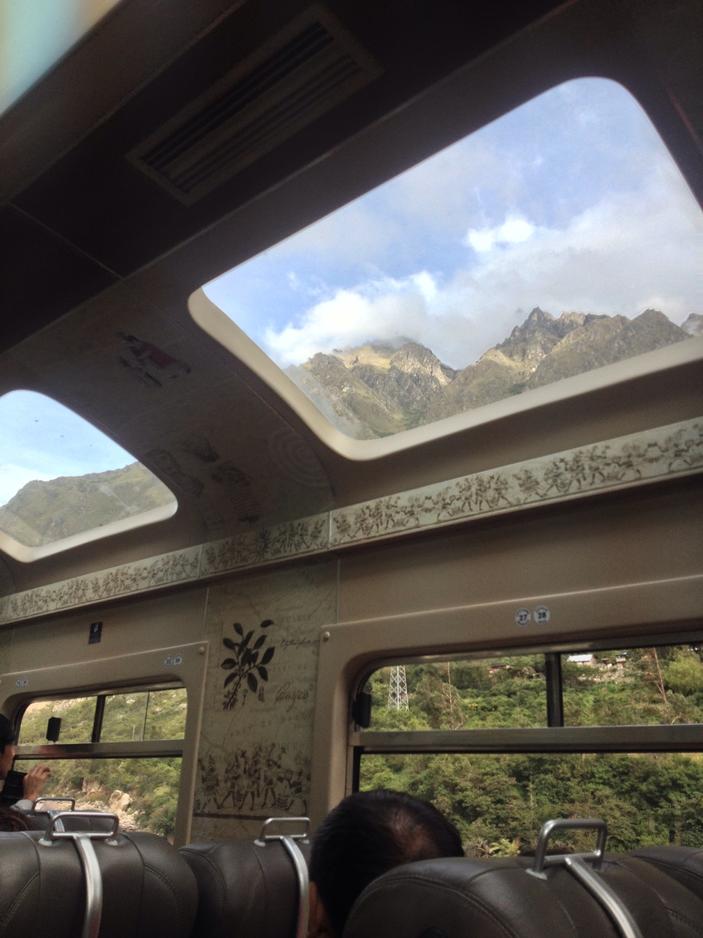
View From The Train
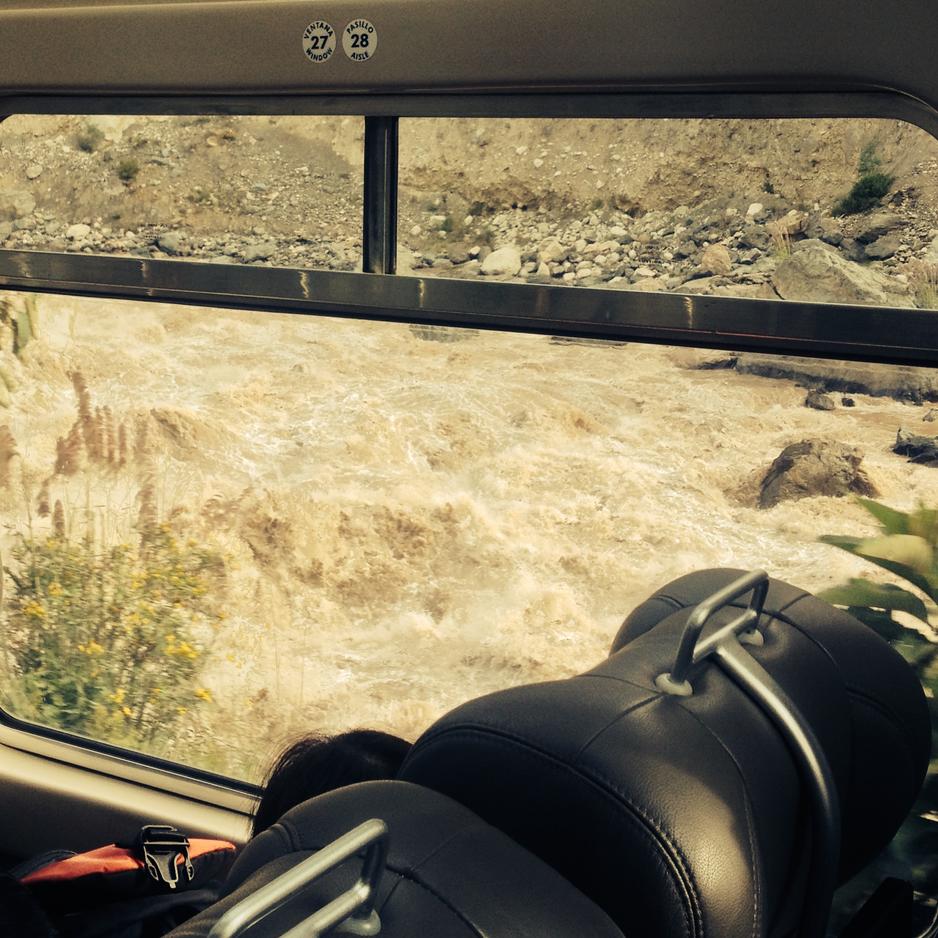
Flooded River
The river that runs by Aguas Calientes and along the way to Ollantaytambo is insanely powerful this time of year.
Taking a Cab from Ollantaytambo to Cusco
The cab was included with our tour thankfully.
Back in Cusco
What a day! We got back to Cusco and picked up our bags from Loki so that we could move to Pariwana Hostel. We said bye to our guide and our tour officially came to an end!